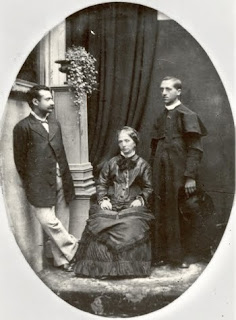For the Superconductor review of the Met's new Willy Decker production of Traviata click this link.
 |
| Tenor James Valenti. Photo © Jamesvalenti.com |
Valenti is a tall, handsome leading man with a voice to match. He soared beautifully through the part of Alfredo, and generated real onstage heat with Ms. Gheorghiu in the first act. In one memorable moment, the much taller tenor picked the diva up and whirled her off her feet. His only small fault was a forced high note in the second act. He hit it, but it wasn't pretty.
Verdi's dying courtesan remains Ms. Gheorghiu's signature part, and Monday night's performance showed why. She sang with fire and warmth in the first act, intelligence in the second, and real passion in the difficult death scene.
Despite beginning "Sempre libera" with her back to the audience, she brought down the house with this soprano showpiece. Her acting is an equal footing with the singing, and she is not afraid to show illness and frailty in the role.
Thomas Hampson was perfect casting for Germont pere, singing this unsympathetic part with his customary musicality and intelligence. His "Di provenza il mar" was a clinic in lyric baritone singing, and his entrances in the last two scenes raised the bar for the two leads. It was also nice to see veteran bass Paul Plishka in the small role of Dr. Grenvil.
This is the last run for this Traviata which will be replaced by Willy Decker's spare Salzburg staging next season. It was picked as a last-minute replacement (for "economic reasons") for John Corigliano's The Ghosts of Versailles, which would have featured Ms. Gheorghiu as Marie Antoinette. Given the excesses of the Zeffirelli production, and its elaborate sets, ridiculous ballet and period costumes, it is hard to see where the money was saved.










+1868+poster+ON2010-03-12.jpeg)






